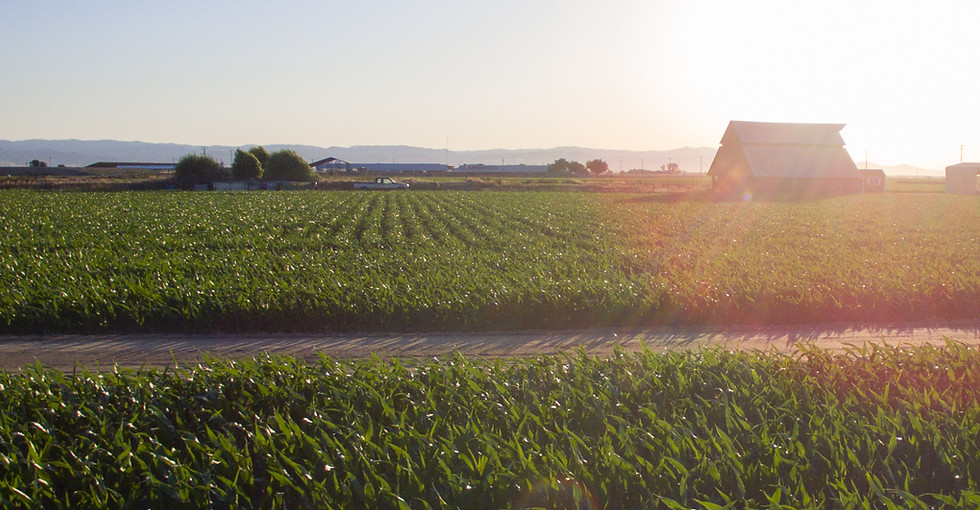
WATER-SMART DAIRY
88%
The amount of water used to produce each gallon of California milk has decreased more than 88% over the past 50-plus years, primarily due to:
-
Improved feed crop production
-
Use of byproducts as feed
-
Water use efficiency


Water Conscious Cows
Recycling Nutrients = Conserving Water
Up to 40% of feed ingredients used on California
dairies are agricultural byproducts, such as almond
hulls, cotton seed, and citrus pulp, which could otherwise be wasted. By upcycling byproducts, dairy farms are reducing the use of water, energy, and fossil fuels needed to grow feed crops.
Researchers at UC Davis have estimated that this practice reduces the amount of water needed to grow feed by as much as 1.3 trillion gallons.


Water Reuse
Water reuse is standard practice on California dairy farms, where the same water is used an average of four times:
-
Clean water is used in the refrigeration process to cool milk.
-
Water recycled from refrigeration is then used to wash and cool cows.
-
After water is used to wash cows, it is captured, stored, and used multiple times to clean barn floors.
-
This nutrient-rich water is then used to irrigate feed crops in surrounding fields.
Smart Resource Management
The diet of today’s California dairy cow is a tremendous example of smart resource management. Improvements made in feed quality have resulted in improved overall efficiency of dairy production—more milk per cow—and 88% less water needed to produce each gallon of milk. To ensure top-quality feed and manage farm economics, many California dairy farmers grow a portion of their own feed crops. This makes irrigation efficiency a key focus in dairy farmers' strategy to conserve water. Some dairy farmers have even adopted more drought-tolerant feed crops, such as sorghum.
Using subsurface drip irrigation and other water-efficient practices, a growing number of California dairies are greatly reducing farm-water use and improving water quality protection, while also reducing greenhouse gas emissions. This includes the adoption of a subsurface drip irrigation system that also applies the farm’s manure effluent directly to the root zone. The approach has demonstrated a 38% increase in water efficiency (yield per acre/inch of water), using about 36% less water, while maintaining or increasing crop yields. Initially demonstrated on three farms, there are now at least 36 California dairy farms using the technology, with more farmers interested.

Cutting-Edge Research
California's dairy farmers have a long history of supporting cutting-edge research and pioneering new practices. Dairy farmers are partnering with engineers, researchers, and government agencies to verify environmentally-conscious practices and identify opportunities for future investments in water-smart technologies. Efficient technologies like sensor-driven cow-cooling soakers, or closed loop refrigeration systems are helping conserve water use in barns and milking parlors. The California Dairy Research Foundation is supporting several research projects to help continue to advancing water conservation on dairy farms.

CA Dairies & Partners Nationally Recognized for Saving Billions of Gallons of Water
Pioneering New Technology
California dairy farmers are developing a new, high-tech model for growing dairy feed indoors, in vertically stored trays. The resulting sprouted grains are highly nutritious for cows and can replace the use of alfalfa, using 95% less water.

Protecting Water Quality
California dairy farms are working to protect groundwater through regular testing, monitoring, and reporting, as part of the nation’s most comprehensive water quality program. Using this information, dairy farms are developing and implementing improved management practices.
-
Dairy farmers are participating in local efforts to ensure all Californians have immediate access to clean drinking water.

-
Samples of soil, water, and plant tissue are gathered and analyzed regularly to ensure proper nutrient management on dairy forage fields.
-
Each California dairy follows a certified nutrient management plan that helps ensure the appropriate application of nutrients for crops and the protection of groundwater.
-
Manure is used to build healthy soils, providing organic material for growing feed crops on the farm.
-
California dairy farmers are working collaboratively to explore economically sustainable ways to create transportable and valuable manure-based soil amendments for use on other agricultural crops.
Manure, Soil Heath & Water...
Increasing soil organic matter by 1% can increase
soil's water holding
capacity by 3.7%.
- California Department of Food and Agriculture




